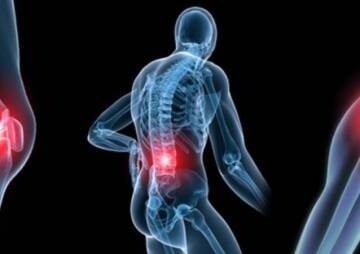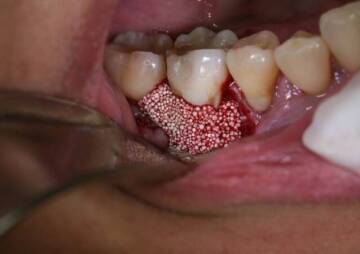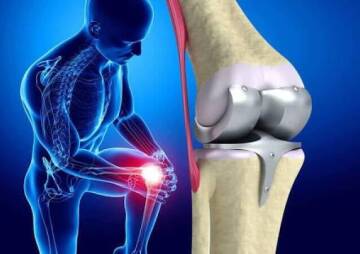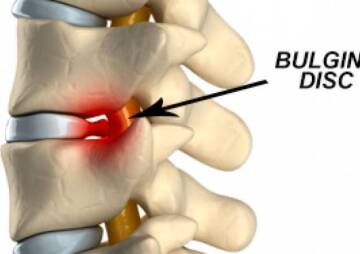-
Category
Craniomaxillofacial Surgery
Orthopedic Surgery
Spine Surgery
Orthopedic Implants
Hip Surgery
Knee Surgery
Pectus Excavatum
Bone Graft
Disinfectants
Healthcare
Osteoarthritis - Causes, Diagnosis, And Treatment

Osteoarthritis is a disease that affects the joints—the most common of the 100 types of arthritis, with millions of people suffering from it worldwide. The causes of osteoarthritis, its diagnosis and treatment are some of the topics you may want to know more about. In this article, you can find all this information in detail.
Osteoarthritis is a word you must have heard many times or use every day. What Is osteoarthritis meaning? Osteoarthritis is one of the most common types of arthritis that millions of people worldwide suffer from. Doctors have diagnosed more than 100 types of arthritis that affect about 63 million U.S. adults by 2020 and are estimated to reach 78 million by 2040. They also say that approximately 40 million adults in the United States suffer from osteoarthritis (OA), so this figure indicates that osteoarthritis is the most common form of arthritis. How well do you know about this prevalent condition? Do you know the cause of osteoarthritis and the risk factors for this disease? To understand the answers to your questions, read the rest of the article to know everything about osteoarthritis and how to prevent and treat it.
What Is Osteoarthritis?
If we want to define osteoarthritis, it is better to say that it consists of two words. 'Osteo' means related to the bones, and 'arthritis' means painful inflammation and stiffness in the joints. As a result, osteoarthritis is a degenerative joint disease that causes cartilage to break down in the joints over time. The joint is where the two bones meet, and their ends are covered with a protective tissue called cartilage to prevent the bones from rubbing against each other. Osteoarthritis targets cartilage directly and breaks it down over time. As a result of cartilage loss, the two joint bones wear away, causing severe pain and stiffness in the joints. This condition should not be confused with osteoporosis since the cartilage in osteoporosis is healthy, but the bone itself is weakened. As a result, bones are more prone to fracture. Unfortunately, the number of people suffering from osteoarthritis increases significantly every year due to many reasons such as a sedentary lifestyle, poor diet, and obesity.
Osteoarthritis Causes and Risk Factors

As an osteoarthritis patient or someone who wants to prevent the disease, you may ask, what are the causes of osteoarthritis? Some doctors claim that the causes of osteoarthritis and OA are unknown, but some primary and secondary factors trigger the disease. People of all races, genders, and ages can suffer from osteoarthritis, and in many countries around the world, OA is a significant cause of physical disability. Since osteoarthritis is also known as "wear and tear" arthritis, aging and more stress on your knee are primary causes of osteoarthritis. Interestingly, some people think that OA is most common in people over 65, but this is not true; because statistics say only 43% of people with OA are 65 years or older. The 88% of people suffering from osteoarthritis are approximately 45 years of age and older.
Osteoarthritis Causes In Women
Gender is one of the main risk factors for osteoarthritis, so about 62% of people with OA are women. This is a high figure; what do you think could be the reason? There are several reasons why women are prone to OA. Changes in hormone levels in both menstruation and menopause are the leading causes of the development of osteoarthritis. Hormone levels fluctuate during menstruation periods, causing joint laxity, which can lead to joint dysfunction and injury. Also, during menopause, the amount of estrogen significantly decreases, which also causes changes in the joints. All these hormonal changes facilitate the development of osteoarthritis.
Another factor that triggers the development of OA in women is the differences in the musculoskeletal system. For example, women's knees contain less cartilage than men's knees, and their knee joints don't fit together well. Also, women tend to be more obese than men, and obesity is one of the major factors of OA because the joints need to bear excess weight, thereby accelerating the development of osteoarthritis.
Risk Factors For Osteoarthritis
In addition to aging and normal wear and tear, there are many risk factors for osteoarthritis. In other words, these risk factors are secondary causes of OA where your joints wear out due to another disease or medical condition. Secondary causes of OA include:
- Obesity: Doctors say that overweight and obese people are more prone to OA, especially knee osteoarthritis. Excess weight puts more pressure on your hip and knee joints and provides a good environment for OA incidence. Coggon et al. reported that people with a BMI> 30 kg / m2 were 6.8 times more likely to develop knee OA than controls with normal weight. (Source)
- Diabetes: this condition and other hormonal disorders are important risk factors for osteoarthritis. Type 2 Diabetes Mellitus (T2DM) can cause inflammation in the joints and lead to OA development.
- Genes: Results of different studies have shown that people with family members with OA are more likely to develop OA. Heredity is a significant risk factor for osteoarthritis. So if you have a family history of osteoarthritis, you need to be more careful about your joints.
- Rheumatoid arthritis is an autoimmune condition that causes inflammation in the joints. This condition damages the joints and degrades them after a while, thus providing the best environment for the incidence of osteoarthritis.
- Overuse: Your job or hobbies may be things that put a lot of stress on your joints. For example, knee OA prevalence is higher in sports such as football and competitive weight lifting. Farmers, cleaners, blue-collar workers, and miners are also more likely to experience knee osteoarthritis.
- Congenital abnormalities are conditions in which a person was born with a genetic problem, for example, unusual joints. These abnormal joints, especially in the hip, wear out over time, and the person develops osteoarthritis.
- Joint injuries for various reasons such as bad falls or car accidents can accelerate OA development.
- Gout is a condition in which crystals such as uric acid crystals or calcium pyrophosphate crystals accumulate in your joint cartilage. This condition causes inflammation and pain in the joints, thus eventually leading to the incidence of OA.
You may think I do not have any of these risk factors, so I am not prone to osteoarthritis. However, this is not true because OA is a common condition that can develop in anyone regardless of age, gender, ethnicity, or health status. If you are a healthy person, the triggering of OA is entirely up to you. You can prevent the development of OA by changing your lifestyle and doing some strengthening exercises. Or conversely, you can help OA develop by doing activities that damage or put more pressure on your joints, as well as having a sedentary lifestyle or poor eating habits.
Osteoarthritis Stages and Symptoms

Because of the high prevalence of osteoarthritis today, doctors estimate that one in every two people will develop the disease at various stages in the near future. Osteoarthritis symptoms are different in patients and may worsen from stage to stage. Thanks to advanced medical technologies and increasing physicians' knowledge of the condition, the signs of osteoarthritis can be managed and treated if diagnosed at early stages. However, late diagnosis can worsen OA symptoms to the point where joint replacement is required. When it comes to the OA stages, orthopedic doctors classify this condition into four stages:
Minor ( Stage 1):
This stage is the least severe level of OA at which patients develop minor wear and tear. This stage of OA is so mild that it cannot be detected on X-rays, so the patient either has mild pain or no pain at all. Under these circumstances, your doctor may recommend that you change the intensity of your routine activities or take some supplements to prevent disease progression.
Mild (Stage 2):
At this stage, the disease has progressed one step further, and X-rays show significant growth in the spurs of the bones meeting each other in the joint. The mild stage paves the way for worsening osteoarthritis pain and stiffness, but at this stage, the patient will experience some stiffness and discomfort after periods of inactivity.
Moderate (Stage 3):
At this stage, the cartilage in the affected area gradually begins to wear, and some parts of the joint bones start to rub against each other. Under these conditions, the joint becomes slightly inflamed, and the patient feels pain during daily activities. By the third stage, doctors say patients can recover with non-surgical methods such as medication, exercise, or injections.
Sever (Stage 4):
This is the last and most severe level of OA. Unfortunately, the disease has progressed to the point that the cartilage has been totally eroded, and the joint has become severely inflamed, painful, and almost unusable. In this case, none of the non-surgical treatments will improve the patient's condition, and the only way is joint replacement. In the severe stage, patients may experience the following symptoms:
- Inflammation
- Unbearable pain even at rest
- Joint stiffness after a period of inactivity
- Tenderness when you apply light pressure on the affected area
- Swelling
- Loss of flexibility
- Bone spurs
If you experience mild pain and stiffness in your knees, hip, shoulders, and fingers joints, see your orthopedist in the shortest time. Never postpone treatment because even a minor delay will deprive you of a healthy joint, and you will have to spend the rest of your life with an artificial joint.
Osteoarthritis Diagnosis And Treatment

Doctors always emphasize that early diagnosis of any medical condition is a guarantee for patients' recovery. Early diagnosis and treatment can also significantly reduce treatment costs. For example, people with knee or hip osteoarthritis who postpone treatment will eventually need a joint replacement. In that case, they will lose their knees or hip joints and have to live with a prosthesis for the rest of their lives and spend about $60,000 for joint replacement surgery. However, if the condition had been diagnosed and treated at an earlier stage, they would have healed with a short and cheap treatment. Now, let's see how doctors diagnose osteoarthritis.
- Physical Exam: The orthopedist usually begins the diagnosis with a physical examination. He examines the affected area for swelling, stiffness, pain, and tenderness. It is difficult to definitively diagnose osteoarthritis with a physical examination because it can be mistaken for other joint diseases such as rheumatoid arthritis or joint infection. Therefore, the doctor will try other diagnostic methods.
- Laboratory Tests: Laboratory tests usually include blood tests and joint fluid analysis. Although there is no specific blood test to diagnose osteoarthritis, it helps doctors distinguish OA from rheumatoid arthritis. Joint fluid analysis is also a helpful way to figure out what's causing the discomfort and inflammation, whether it's from osteoarthritis, gout, or infection. The doctor uses a small needle to draw a small amount of joint fluid, which is then sent to a lab to examine inflammation.
- Magnetic resonance imaging (MRI): Although MRI is not very common in the diagnosis of osteoarthritis today, it can provide a detailed image of bone and cartilage in complex conditions and accurately determine the stage of disease progression.
- X-Ray: If an X-ray image shows a gap between the bones of the joint or the growth of bone spurs, doctors may diagnose osteoarthritis. The X-ray image does not reveal cartilage, but it can detect cartilage damage with a gap between the bones.
Treatments For Osteoarthritis
Doctors believe that OA symptoms can be managed with different types of non-surgical, natural, and home remedies. But, these therapies are only effective in the early stages of osteoarthritis. Surgery is the only way to relieve the discomfort and stiffness caused by osteoarthritis as the disease progresses and treatment is delayed. Orthopedists prescribe the following home and natural pain relief approaches to patients in the first and second stages:
- Weight loss,
- Gentle, low-impact physical activities for at least 20 to 30 minutes every day or every other day;
- Apply a cold or hot compress to the affected joints many times a day for 15 to 20 minutes;
- Resting your muscles and joints with adequate sleep;
- Acupuncture;
- Massage therapy;
- Physical therapy;
- Consume some supplements and herbs such as fish oil, green tea, and ginger;
- Epsom salt baths;
- Consume foods that are high in flavonoids and antioxidants, such as fruits and vegetables.
In addition to home remedies and herbal and natural supplements, there are various medications that help relieve pain and reduce inflammation caused by osteoarthritis. They include:
- Corticosteroids: Doctors usually prescribe the oral form of corticosteroids, but there is also an injectable form that is injected directly into the affected joint.
- Nonsteroidal anti-inflammatory drugs such as Advil (ibuprofen) and Aleve (naproxen) help reduce the swelling and discomfort.
- Hyaluronic Acid: This substance occurs naturally in joints and acts as a joint lubricant. In osteoarthritis, this substance is broken down, and doctors inject hyaluronic acid into the joint once a week for 3 to 5 weeks to relieve pain and inflammation.
- Counterirritants are creams and ointments that you can apply to the affected joint to relieve pain.
- Analgesics are medications that only relieve pain and have no effect on reducing inflammation.
If none of the above treatments improves the patient's condition, the final solution is joint replacement surgery. While shoulder osteoarthritis or hand and foot OA are uncommon, the joints may be replaced with a prosthesis if treatment is delayed. The joints most affected by osteoarthritis are the hip or knee joints, and approximately 600,000 knee replacements and 300,000 hip replacements are performed in the United States each year. Doctors often insist that the disease does not progress to the point where a joint replacement is needed or that patients suffer from OA complications for years.
What Are The Complications Of Osteoarthritis?

Osteoarthritis has a significant impact on the patient's life. It lowers people's self-esteem and sometimes leads to depression. Patients no longer do their favorite activities, and when it gets worse, they don't even do their daily activities. In addition to these, people with OA may experience other medical complications; such as:
- Bleeding inside the joint;
- Infection in the affected joint;
- Osteonecrosis, which means bone death;
- Chondrolysis, which means a rapid and complete breakdown of cartilage;
- Tendon and ligament damage around the affected joint as a result of joint instability;
- Stress fractures
- Pinched nerve
Although patients suffering from OA rarely experience these complications, they must take care of their joint health to avoid the possible complications of osteoarthritis.
The Takeaway
Based on the information provided in this article, you understand that osteoarthritis may develop as a result of aging or an unhealthy lifestyle. Why do you think doctors estimate that 1 in 2 people will have OA in the next few years? The answer is an unhealthy lifestyle and bad eating habits. People today are less active in life because most jobs are either automated or online, especially during the COVID-19 pandemic. In other words, a sedentary lifestyle and not exercising can trigger the development of osteoarthritis. As a result, it is better to reduce the risk of developing OA by adopting a healthier lifestyle, exercising regularly, and eating a well-balanced diet. If you have experience with osteoarthritis and recovery options or prevention, please share your knowledge in the comments section below so that other users can benefit.






